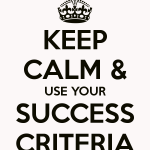When you think about it, some change management activities seem very abstract. For example, “create an environment for change” Or, “manage change resistance”. These seem very important, and what change management is supposed to do. But, don’t they just seem so nebulous and vague? These seem on par with “eliminate global hunger”, or “attain world peace”, don’t they? No way to measure them, it seems.
Suppose you are a PM or a change manager on a project and the executive sponsor looks straight at you and says, “I want you to reduce change resistance on my project. Can you do that for me?” Yup, that exact scenario I experienced during my first invitation to a steering committee meeting where I was being introduced. No pressure.
The answer is obvious. Well, wait – what you have to answer is obvious: “Yes, I can.” But the answer of how you are going to reduce resistance is far from obvious, right?
And a secondary question comes up. Who is actually responsible for reducing this resistance? Is it really you?
From a project management perspective, you have to have actions/tasks, durations, due dates and who’s responsible. So, can you actually add “reduce change resistance” to a Gantt chart?
Absolutely!
Actually you have to!
Otherwise you are not doing change management. And in this blog I am going to explain how you go about planning and measuring any change management activity you can think of.
A fun online conversation
Recently one of my LinkedIn contacts challenged me on this specific topic. In a comment somewhere I said that all change management activities must be incorporated into a project plan. He then replied to me. Here was his comment, verbatim:
I agree that there are certain elements of OCM that can be incorporated into a Project Plan but not all which are probably the most important ones e.g.:
– Creating an environment for change.
– Managing/dealing with change resistance.
– Engendering change behaviours.
– Addressing organisational culture.
Questions:
– How would you incorporate those activities … a single line for each covering the whole project life-cycle?
– What would the deliverables be?
– What KPI’s would you measure against? [Peter’s comment: KPI stands for Key Performance Indicators, or metrics, in case you are not familiar with the acronym]
Good points, aren’t they? I really love these kinds of questions! It makes me sit up and think, “Did I overreach myself here? Is there something important that I missed?”
Like a typical consultant I am occasionally wrong, but never in doubt. According to my wife, I am more than occasionally wrong. Frequently, she says. I don’t see it.
The reply
So after some thinking, here was my answer, also verbatim:
Hi R.,
Great question, get it all the time. Thanks!
Rather than get into detail into each one, let me just pick the first one you raised and get into some detail on that one: “Creating an environment for change”. Very important element, and should make it into project plan, no excuses! Here’s how.
– First task, define what that means, “create an environment for change”.
One thing that means for me is having leaders engaged in participating and leading the change. There are others but let’s focus on this one. And if that and the others are in place, you have created an environment for change!
– The next step is to define what “engaged leaders” means. How would you measure that leaders are engaged? That could be a bunch of things, but through discussions with said leaders we may agree that one metric is attending Change Leadership Network meetings. Now you have one KPI!
– The final step is to establish Change Leadership Network sessions. That’s an activity with tasks and subtasks in a project plan.
So, in short, I respectfully disagree that OCM cannot be measured. Everything change management can, and must, be measured and incorporated into a project plan. Else OCM will continue to be perceived as fluff.
The follow up question
But my contact wasn’t finished. Here is his comment back to me, with a follow on question. He was good. I like him!
You have picked an easy one but a good answer! How about managing/dealing with resistance … both overt and covert?
And, again, here was my response:
Easy one?! I thought I picked the hardest of the bunch! You’re a tough customer, R. ;o) But OK, here’s “dealing with resistance”.
Potential sources of resistance are identified early on during the stakeholder analysis. I think we’re probably together on that one. The issue is how to deal with it.
Resistance is really just a series of behaviours, whether overt (someone declining openly to do something) or covert (someone not showing up to a meeting where they’re needed). These are behaviours we don’t want, obviously. So to counter these behaviours I tend to work with my team to identify what behaviours we do want.
Then I plan change activities that will demonstrate those behaviours in a way we can track them. Here’s an example.
A tough outsourcing case study
A project a few years ago included outsourcing about 400 manual finance jobs from Canada and the US to Hungary. Part of that involved a team coming over from Hungary to shadow how people did their work so that they could transition it over more efficiently. That meant that people who were losing their jobs had to teach those who would be taking their jobs over. It was very unpleasant and the risk of resistance was huge.
The leader of that group was our biggest source of worry. We needed her to encourage her managers, supervisors and staff to work with this advance team and teach them all they knew, including their little work-arounds and short-cuts that are not in any procedure manual. We needed her to keep the project team abreast of any potential issues and risks that only she would be able to identify.
She herself was not happy. She was about to lose her job too. It was tricky, to put it mildly. So, our change management plan included several components.
One was having her join our team Working Committee to lead this portion of the project. Her boss was already on the Steering Committee. So there we could monitor how things were progressing and how supportive she remained by how well she was managing this series of activities.
We also needed to take care of her and her team. Through discussions with executives and the Steering Committee, we added a Staff Reallocation element and a Retention component to our Change Strategy and Plan.
We also went very heavy on the communication component with this group. All of these were OCM deliverables which we turned into activities and tasks and added them to our project plan. Does that answer it?
That seemed to be the end of our online conversation. It was followed up with an invitation to connect directly, which I did happily.
Steps to make any change request actionable
I don’t know if you have noticed the pattern already. In case you haven’t, here are the steps to take when faced with a seemingly nebulous change management request:
- Get clarity on what the request means. Sometimes that means proposing what you think it is, other times asking the person making the request. One of my favourite questions is to ask, “What does that actually look like?” If I am sitting in my cubicle, what does an “environment for change” look like, feel like? What am I seeing that tells me I am in this environment? How do I feel, and how is that different from the alternative? Those are all questions you can use.
- The next step is to define how you will measure this. If it is a Staff Reallocation Plan, you can measure how many internal positions were offered to impacted people, as in my example above. If it is participating in regular meetings, then measuring attendance becomes a KPI.
- Next is to figure out what activities you need to get to those targets. From point #2 above, the respective activities would be “Develop Staff Reallocation Plan” and “Set up regular meetings”.
- Then it’s straight forward project management. You have an activity now, so do the work breakdown structure and estimate duration and timing.
- Finally, assign responsibility. Who will be on the hook for this task to be successful? Hint: it most likely won’t be the PM or change manager. 95% of the time it will be someone from the business, which makes sense. It’s up to the business to implement the change in their organization. Your job will be to keep them on track and support them when they don’t feel comfortable doing something they said they should.
Testing the steps
Let’s try this with another example from my contact, R.: “engendering change behaviours”.
- What does that look like? There are several possible answers to this, but let’s pick one: people attend local lunch & learns set up by the project team to help their understanding.
- How will we measure this? Attendance. Another possible measurement is how many questions were asked. You can also have a qualitative measurement, such as ‘how engaged were the participants’ (you can use this to compare to other groups attending the same series of lunch & learns).
- What activities do you need to set up? Logically, set up lunch & learns, invite people, and come up with a way to track which invitees showed up, and report on this.
- Task and activity planning is just that, no need to get into that here.
- Who is responsible? Not you. Yes, you’re responsible for setting up the lunch and learn activities, inviting people, measuring and tracking. But you’re not responsible for the attendee’s behaviour. If they don’t show up, what can you do about it? They don’t report to you. But they do report to someone. They should be responsible then. You just have to get them to agree!
If you want to try this yourself, go ahead with the last OCM element mentioned by R., “addressing organisational culture”. If you are interested you can send me what you came up with and I promise to reply. That way we’ll both learn something. This may be especially valuable to you if it’s something from a real project you were on, current or past.
One last caveat.
I don’t want to give the impression that following these steps is a cake walk. These steps fall into the category of ‘simple, but not easy’. As you would be aware from step 4, that step can take a lot of time and effort. That goes for all of the steps.
For example, defining what a request like managing resistance “looks like” (step 1) could take a long time and require several conversations. You may have leaders who disagree on some of these visions, and that takes even more time and seasoned relationship finessing to get alignment.
But the steps work. They’re proven. And if you follow them and do the work required, there is no change management activity that you cannot plan and ultimately successfully realize! (Although you may not get the exact measurement of 2.6m each time). ![]()
Like this blog? Share it with your colleagues. And sign up and you won’t miss another one!













